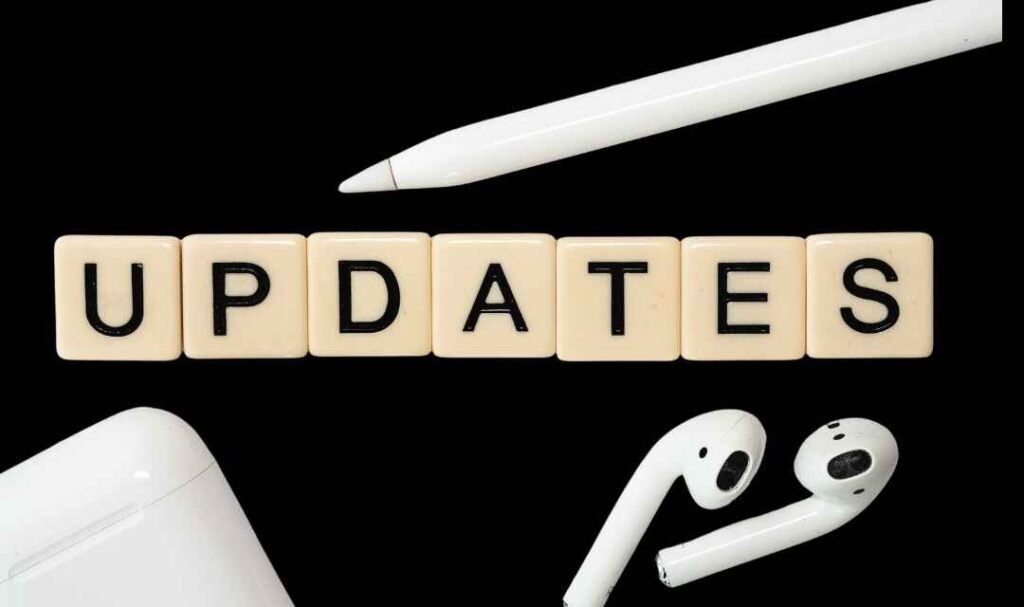When applying for a role, it’s important to emphasize your ability to learn quickly and apply new concepts in practical situations. To do this effectively on your resume, highlight skills that demonstrate your adaptability, such as being versatile, agile, and resourceful. Employers want candidates who can pick things up quickly and move easily between tasks, handling a variety of situations with ease. You might say that you’re able to find creative solutions and adjust your approach as needed.
In your cover letter, you can further communicate your fast learning abilities by providing examples that show how you grasp information or concepts quickly and use them effectively. For instance, you could mention times when you learned a new skill or strategy and successfully applied it in your previous job. It’s also helpful to use synonyms like adaptable and efficiently to make your resume sound more impactful while demonstrating your ability to tackle challenges in new roles.
One of the best tips to incorporate on your resume is to express your soft skills clearly. Saying that you are a strong learner or have strong adaptability shows potential employers that you are an asset to the company. Whether you’re applying for a new job or advancing in your current role, demonstrating your ability to learn quickly will boost your chances during the hiring process.
Quick learner synonyms and phrases to include on your resume
If you want to highlight that you’re a quick learner on your resume, there are many impactful ways to showcase this ability. Use phrases that emphasize being adept, capable, and receptive to training and new concepts. For example, saying you’re able to grasp new ideas quickly conveys your versatile thinking processes and how you can seamlessly adapt to changing project demands.
Highlight instances where you’ve developed skills in fast-paced environments. Mention how your effective communication and teamwork allowed you to build strong relationships and meet project goals. Demonstrating your capacity to retain information, take criticism well, and work autonomously will give supervisors confidence that you can handle tasks and planning with ease.
To stand out, incorporate examples of times you used these skills to benefit an organization. For instance, “Adapted to new training programs and developed effective strategies to improve team performance.” This not only shows you’re adaptable but also that you can create ideas and meet demands with little oversight. Include examples of how your excellent ability to handle projects aligns with career growth and autonomy.
You might enjoy reading: Grateful Alternatives to ‘Thank You for Clarifying’
What does it mean to be a quick learner?
Being a quick learner means you’re a person who can understand new information in a short amount of time and apply it effectively. This includes having excellent communication and listening abilities, as well as analytical skills to interpret data and draw meaningful conclusions. Employers often seek candidates with these strengths in their applications because they can start working immediately with minimal training.
When someone learns quickly, they generally possess the ability to review large volumes of information and follow instructions easily. This gives them an advantage in adapting to the demands of each role. By showcasing your skills, such as being able to take less time to process and apply knowledge, you demonstrate to employers that you’re ready to contribute effectively.
Tips to include your quick learning skills on your resume
Here is a list of tips you can use to show your quick learning ability on your resume:Optimize for keywords
To make your resume stand out for the role you’re pursuing, it’s essential to use the right words from the job posting. Employers often scan applications for relevance, so including specific skills and experiences mentioned in the listing increases your chances of being noticed. For example, customize your resume to highlight recent experience and skills that directly apply to the job you’re interested in.
Being specific not only helps employers see how you’re a good fit but also ensures your application aligns with what they’re looking for. Include only the most important details that match the job to improve your chances of success.
Be unique
To make your resume memorable, highlight qualities that show how you’re a perfect fit for the role. Show employers your ability to bring distinct perspectives, practical insights, and specialized skills to the position. This approach helps employers know what you can offer them compared to other candidates.
Include quick-learning abilities in your application by giving unique examples of how you’ve used this strength effectively. For instance, mention a time you adapted rapidly to new systems, proving you’re not just skilled but also an excellent problem solver. Emphasize how your experience and adaptability make you indispensable, offering potential benefits that others might miss.
Update your skill
To keep your resume competitive, ensure that it contains only recent and relevant information about your skills and experience. Update your resume by removing older items that are no longer relevant to the industry or role you’re pursuing. Highlight your willingness to learn and develop professionally by showcasing new abilities or certifications you’ve acquired.
Being proactive and constantly adding to your skill set is integral to improving your employability. For example, if you’ve gained education or training in a trending field, include it to show your adaptability. This helps demonstrate that you’re not only up-to-date but also committed to growing in your career.
Where to highlight your quick learning skills
Here are some places to highlight your quick learning skills on your resume. In the skills section, mention how you are agile and adaptable, especially when fulfilling the changing requirements of roles. You can also list applications or technology you mastered quickly to meet job targets.
In your experience history, show how you’ve used these abilities in real-world positions. For example, explain how you adapted to new processes or learned new tools to improve productivity. Use keywords that employers and scanners look for, and carefully modify the document to match the job application. Including these details at the top and bottom of your resume ensures managers notice your ability to handle diverse careers efficiently.
Include your educational background
Including your education on your resume can create a strong case for your ability to learn quickly. Use the education section to list all degrees, certifications, online courses, or training you’ve completed that applies to the position you’re applying for. This area is also a great place to highlight skills gained through these experiences.
For example, if you’ve completed certifications or courses in a short time, it shows your ability to adapt and master new material efficiently. Ensure it is well-organized to demonstrate relevance, as this boosts your chances of being hired by showcasing your proactive approach to learning and growth.
Add relevant work experience
When creating your resume, it is essential to keep the work experience section concise and clear. Employers typically have only a few seconds to scan your application, so prioritizing important information helps them determine if you’re qualified for the role. Use this section to showcase your ability to learn and apply skills in fast-paced environments.
Include not only paid roles but also volunteer work, internships, or student societies that connect to the job description. Use keywords directly from the posting, ensuring your experiences align with what’s being sought. For example, if you adapted quickly to new tools in an internship, highlight how that prepared you to handle challenges in a dynamic workplace.
Include a cover letter
Employers often value cover letters because they allow you to be more expressive and convey your enthusiasm for the role. Before writing, ensure you understand the job posting and what the position entails. Use this opportunity to highlight your experience, expertise, and your ability to learn quickly and grow in a dynamic workplace.
Follow proper formatting guidelines by starting with an engaging opening greeting and carefully editing for grammatical errors. Include keywords from the posting to align your skills with the employer’s expectations. For example, mention how you mastered a system or tool relevant to the job, showing you possess the necessary abilities. Cover letters also allow you to add a personal touch that complements your resume.
How to improve your quick learning skills
Here are some strategies you can use to improve your quick learning skills:
1. Assess your current skills
To show you’re a fast learner on your resume, start by assessing your current skills. Make a list of the abilities you already possess, such as computer literacy, communication, or problem-solving. Evaluate yourself honestly to identify areas where you might improve or gain new expertise. This self-evaluation can highlight how you’re ready to learn and adapt to secure a new job or advance in your current role.
For example, if you’re proficient in certain tools, mention them, and give examples of how you’ve used these skills effectively. Assessing your abilities also helps you see the steps needed to grow, ensuring your resume reflects your potential to thrive in dynamic environments.
2. Recognize how you learn and develop a goal
To show you’re a fast learner, it’s important to understand your learning style and develop a goal. If you’re unsure, try different types of learning, such as hands-on practice, reading, or visual aids, to see which suits you best. Knowing how you acquire abilities quickly will help you focus on tasks and stay on track.
Consider setting milestones that break your goals into separate, focused steps. For example, if your job requires new technical skills, create a plan to understand them step by step. This approach will not only advance your abilities but also show potential employers that you’re proactive and goal-oriented.
3. Focus on a specific skill
While it’s good to have a wide range of skills, focusing on a single skill at a time can help you develop your ability to function effectively in a specific area. For instance, concentrating on critical thinking, project management, or creative writing allows you to perfect that skill before working on others.
By concentrating on one skill, you’ll learn efficiently and be able to grasp examples quickly when applying it to tasks. This approach demonstrates adaptability and shows employers you can start working effectively while still growing your expertise. Include examples of how this focus has enhanced your skills in your resume.
You might enjoy reading: Loot vs Lute Uncovering the Surprising Connection
4. Make a learning schedule and stick to it
Make a learning schedule by breaking your goals into smaller, manageable steps and allocating time for studying each day. A focused daily plan that includes at least an hour of study can help you stay on track while maintaining a balance with your routine. Ensure you include times to eat, sleep, and socialize, as this will keep you energized and productive.
When creating a schedule, commit to a strategy that fits your current routine and allows for breaks. Use this opportunity to take full advantage of your time, staying consistent to reduce tasks into smaller, more achievable steps. This approach not only improves your learning but also keeps your progress sustainable.
5. Make use of different educational tools
Make use of various educational tools like books, videos, courses, and blog posts to learn new skills that are valuable in the job market. These tools can be incredibly helpful for gaining information and improving tasks relevant to your career. Employers prioritize candidates who take initiative, so using tools to enhance your abilities demonstrates your commitment to career growth and advancement.
By exploring topics of interest and completing tools like online courses, you can show how you’ve applied experiences to better align with an organization’s needs. This approach allows you to stay competitive and makes it easier to adapt to the demands of your job. Demonstrate how your learning has been applied by giving examples in your resume, showcasing your readiness to contribute.
6. Volunteer in a professional organization
Volunteering in a professional organization is an effective way to acquire skills and gain experience relevant to your job. Joining such organizations can expose you to a real work environment, helping you develop connections with professionals in the field. This is especially valuable for a recent graduate with little work history, as it provides resources and opportunities to enhance your expertise.
It may help your resume stand out by showing your proactive approach to learning. You can also showcase how volunteering helped develop your abilities, such as teamwork or task management, making you a strong candidate. Adding this experience to your resume highlights both your commitment to growth and your adaptability in professional settings.
What does it mean to be a fast learner?
A fast learner is someone who embodies skills like being a strategic thinker and a good listener, able to analyze problems and come up with solutions quickly. This person understands how to apply learning effectively in real-world scenarios, making them highly valuable in any industry. On a resume, this translates to showcasing abilities in communication, research, planning, and project management.
Fast learners often need to be told only once how to do tasks and can organize or adapt to a number of areas. They’re capable of choosing the best course of action, even in challenging situations. These traits are especially important for career paths that require thoughtful problem-solving and little extra guidance, proving their readiness for demanding roles.
Get interview-ready with tips from Indeed
Prepare for interviews with practice questions and tips
How to emphasize the ability to learn quickly
There are several ways to tell potential employers about your fast learning skills without sounding repetitive. Include specific examples throughout your resume and cover letter to convey how you’ve applied these abilities in real-world situations. For instance, discuss a time when you adapted quickly to a new tool or process.
Avoiding redundancy is key—focus on different skills in various sections, such as adaptability in one part and problem-solving in another. Consider suggestions like mentioning how you feel comfortable learning on the go or excelling in fast-paced environments, making your resume both engaging and informative.
Get comfortable with ways to say fast learner
To convey you’re a fast learner, use terms and phrases that imply skills like being adept, receptive to training, and having a strong ability to grasp new concepts. Practice using words that are synonymous with “fast learner,” such as versatile, proficient, or highly organized. This approach allows you to break down the term into actionable qualities, like being able to assimilate knowledge efficiently or having an excellent capacity to retain things after hearing them once.
When writing your resume or cover letter, include active statements that show you’re a resourceful employee who is capable of handling multiple tasks. Highlight traits like being a strategic planner, technology-focused, or proficient in project management tools. This shows potential employers your ability to gain knowledge quickly, effectively manage challenges, and adapt to new environments without repeating yourself.
Convey your fast learning skills throughout your resume
To effectively convey your fast learning skills, carefully analyze where it makes the most sense to include them. List synonyms like “adaptable” or “quick to grasp new concepts” in the skills section, and pair them with context in the education or experiences areas. For example, mention how you used your ability to learn quickly to adapt to a new tool or process in a previous role.
Once you have a clear idea of the qualities to highlight, decide on the most obvious place to showcase them. Add terms that match the job requirements while ensuring they fit naturally into your descriptions. This approach not only makes your resume stand out but also shows thoughtful consideration of your skills and how they can benefit potential employers.
Skills
The skills section of your resume is a critical area to showcase what is required for the role. This section often takes the form of bullet points rather than narrative, making it easy for employers to identify your key strengths. Tailor the skills to vary depending on the specific profession or job posting you’re targeting.
For example, subscribing to what the job demands, include both technical and soft skills that align with the role. Highlight abilities like adaptability, quick learning, and proficiency in relevant tools, ensuring they stand out and demonstrate your readiness for the position.
Education
The education section of your resume is an excellent opportunity to display your ability to quickly grasp concepts and your dedication to being a life-long learner. Use this space to showcase accomplishments like a degree, certifications, or training in areas such as project management or online classes. Include examples that make sense for your career, such as leadership roles or techniques learned that transfer to daily office activities.
This section is not just about listing what you’ve done—it gives you a place to highlight how you are actively pursuing growth. For instance, mention doing things like certifications that enhance your skills or techniques learned that improve efficiency. This approach can show employers that you are someone who will adapt and excel in their organization.
Past Experience
The experience section of your resume is a perfect opportunity to provide a narrative of your ability to adapt and excel. Use this space to highlight specific examples of your skills and accomplishments in previous roles. For instance, saying you booked more than $250,000 worth of new business in your first year in sales shows your fast learning ability by demonstrating how you could quickly onboard and start producing results right away.
This section can also be slightly tailored to highlight how your work history reflects your capacity to pick up new systems or processes. Include information that emphasizes not just what you’ve done but how you’ve consistently applied fast learning to achieve results in every role you’ve held.
Include fast learning skills in your cover letter
When writing your cover letter, make yourself appear more desirable as a candidate by choosing a few keywords that speak to your ability to learn quickly. Provide context for how this skill has helped you excel in a role, emphasizing the point in a nuanced way without making it seem broad or generic. For example, mention a situation in which you adapted to a new system or process and delivered results effectively.
Follow typical formatting conventions, starting with a captivating introduction and a standard greeting, then move on to including skills relevant to the job. This shows employers you can both align with their needs and apply these abilities in real situations. End with a professional signature that leaves a lasting impression.
You might enjoy reading: Top 22 alternatives to Say Does That Work for You





